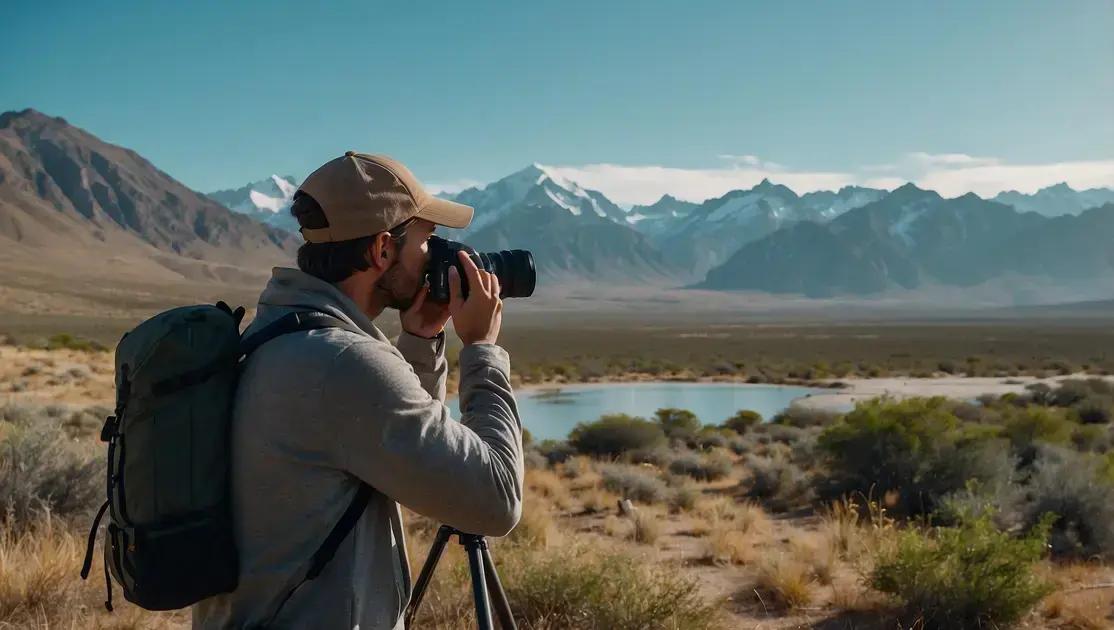Exploring remote locations is a unique experience that offers natural beauty and tranquility. The best times to visit vary depending on the season, with spring and fall offering vibrant landscapes and summer providing outdoor adventures.
Have you ever dreamed of exploring places off the beaten track? Remote locations are truly hidden paradises, ready to be discovered by adventurers. If you are tired of crowded tourist destinations, this article is for you! We will take you on fascinating journeys, where hearing the sound of the wind and seeing untouched landscapes are part of the experience. Learn the definition of remote locations, the best destinations to visit and unmissable tips to make your trip unforgettable.
Dark Sky Reserves
You remote locations are often chosen by those seeking unique experiences and deeper connections with nature. Among their attractions, dark sky reserves have stood out as dream destinations for lovers of astronomy and tranquility.
What are dark sky reserves?
Dark sky reserves are protected areas designated to preserve the darkness of the night sky, free from light pollution. These locations offer a clear and spectacular view of the cosmos, allowing visitors to observe stars, constellations and astronomical phenomena with ease.
Benefits of visiting dark sky reserves
In addition to providing an unforgettable visual experience, visiting dark sky reserves also contributes to the conservation of local biodiversity. These areas are often home to species that depend on natural, unlit environments to survive. Visitors can enjoy nighttime hiking, camping under the stars, and even astronomical observation events, promoting a greater understanding of our universe.
Tips to make the most of your visit
To get the best experience possible at a dark sky reserve, bring a telescope or binoculars, a map of the constellations, and be sure to check the weather conditions. It’s best to visit during a new moon, when the sky is darkest. Also, respecting the rules of the site and avoiding the use of bright lights helps preserve the integrity of the environment and the experience for everyone.
Photography Tips

If you are planning to explore remote locations, taking good photos is an essential part of your adventure. Here are some photography tips that can help you capture the essence of these incredible destinations.
Prepare before your trip
Before heading to remote locations, familiarize yourself with the environment. Research the location, understand the best times to take photos, and consider the weather conditions. Bring adequate equipment, such as cameras, extra lenses, and tripods, to ensure you are prepared for any situation.
Use natural light
Natural light can make a big difference in your photos. The early morning and late afternoon hours, known as the “golden hour,” offer soft, warm light that brings out colors and details. Try to avoid shooting during midday, when the light can be too harsh and cause unwanted shadows.
Creative framing
Experiment with different angles and compositions. Use natural elements, such as trees or rocks, to frame your image. Consider the rule of thirds: divide your image into three equal parts, and place the main elements at one of the intersections. This creates visual balance.
Capture the reality of the place
Don’t just take posed photos; capture candid moments and the natural beauty around you. People interacting with nature or subtle details of the environment can bring your photos to life. Showing the authenticity of the place helps you tell a story through your images.
Take care of your safety
During your photo shoot, make your safety a priority. In remote locations, it’s important to be aware of your surroundings and avoid putting yourself in dangerous situations. Always have an exit plan and let someone know about your photography plans.
Best times
When it comes to visiting remote locations, know the best times for your trip can make all the difference. Weather conditions, flora and fauna change throughout the year, impacting the experience you will have. Here is some important information to help you choose the most suitable time for your adventure.
Spring: The season of flowers
Spring is one of the best times to visit many remote locations. With mild temperatures and nature in full bloom, you’ll be able to enjoy vibrant landscapes and wildlife awakening. This is a great time for hiking and camping, as the days are longer and more pleasant.
Summer: The season of adventures
Summer brings peak season to many remote destinations, especially those with beaches or mountains. Warm temperatures are ideal for outdoor activities like swimming, hiking, and climbing. However, it’s important to be prepared for extreme heat in some areas. Also, expect more tourists and book your accommodations in advance.
Autumn: Stunning Colors
Fall is another great time to explore remote locations. Nature takes on shades of orange, red, and yellow, creating stunning views. This is the perfect time to photograph the beauty of the season. Plus, temperatures start to cool down, making it a pleasant time for outdoor activities.
Winter: A scene of tranquility
Visiting remote locations in winter can be a unique experience, especially in mountainous regions. Many people enjoy winter sports such as skiing and snowboarding. Additionally, these destinations are often much less crowded, allowing for a deeper connection with nature. However, you should be prepared for the cold and harsh weather conditions.
Explore Remote Locations
When visiting remote locations, you have the chance to connect with nature in a unique way. Each season offers something special, whether it's the beauty of flowers in spring or the tranquility of snow in winter.
With the best times With travel in mind, you can plan unforgettable adventures. Outdoor activities, photography and discovering incredible landscapes make every trip a valuable experience.
Don't hesitate to explore these hidden paradises and enjoy everything they have to offer!


